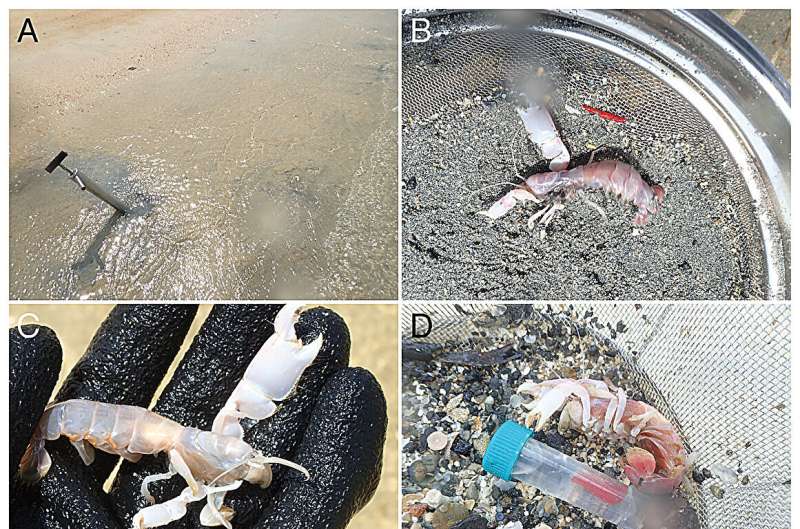November 16, 2023 report
This article has been reviewed according to Science X's editorial process and policies. Editors have highlighted the following attributes while ensuring the content's credibility:
fact-checked
peer-reviewed publication
trusted source
proofread
Two new species of worms discovered off Japan's Ryukyu Islands

A team of marine scientists and zoologists from Japan, Malaysia, the U.S. and Russia has discovered two new species of Hesionidae—a type of segmented worm. In their paper published in the journal PeerJ, the group describes how they found the worms living off the cost of Japan's Ryukyu Islands (part of Okinawa's tidal flats) in sandy burrows created by ghost shrimp. They also describe them and outline where the worms fit on the Hesionidae family tree.
Hesionidae are a family of phyllodocid "bristle worms" with legs that look like bristles or tines on a hair comb. They are typically found on continental shelves, though some have been found off the shores of islands. They all have anterior segments that allow the worm to twist and turn. The research team found the two new species while studying the burrowing habits of ghost shrimp, which are also known as glass shrimp due to their transparent bodies.
As they poked around in shrimp burrows, the team came across the two new species of worms cohabiting with the shrimp—both were bright red and both had four eyes. They have been named Parahesione apiculata and Parahesione pulvinata, after the unique shape of the organs on their backs.
The researchers noted that all four of P. pulvinata's eyes were dark red, situated near two sets of cirri. All four of P. apiculata's eyes were discreet and surrounded by triplets of cirri.
The researchers describe both species as having unusually flat bodies, which they suspect help the worms to live alongside their shrimp burrow mates. They further suggest it is likely that the worms and the shrimp have an as-yet unknown symbiotic relationship.
The team states that their bright red bodies are likely due to the hypoxic environment, which the ghost shrimp maintain as a means of protection from predators. Such shrimp, they note, can live for nearly a week without oxygen—their burrows are also quite deep, allowing both worm and shrimp to hide at a great distance from any predator that may wish to dig for them.
The research team also points out that neither species was found at any other site, which suggests both are likely obligate symbionts.
More information: Naoto Jimi et al, Two new species of Parahesione (Annelida: Hesionidae) associated with ghost shrimps (Crustacea: Decapoda) and their phylogenetic relationships, PeerJ (2023). DOI: 10.7717/peerj.16346
Journal information: PeerJ
© 2023 Science X Network




















